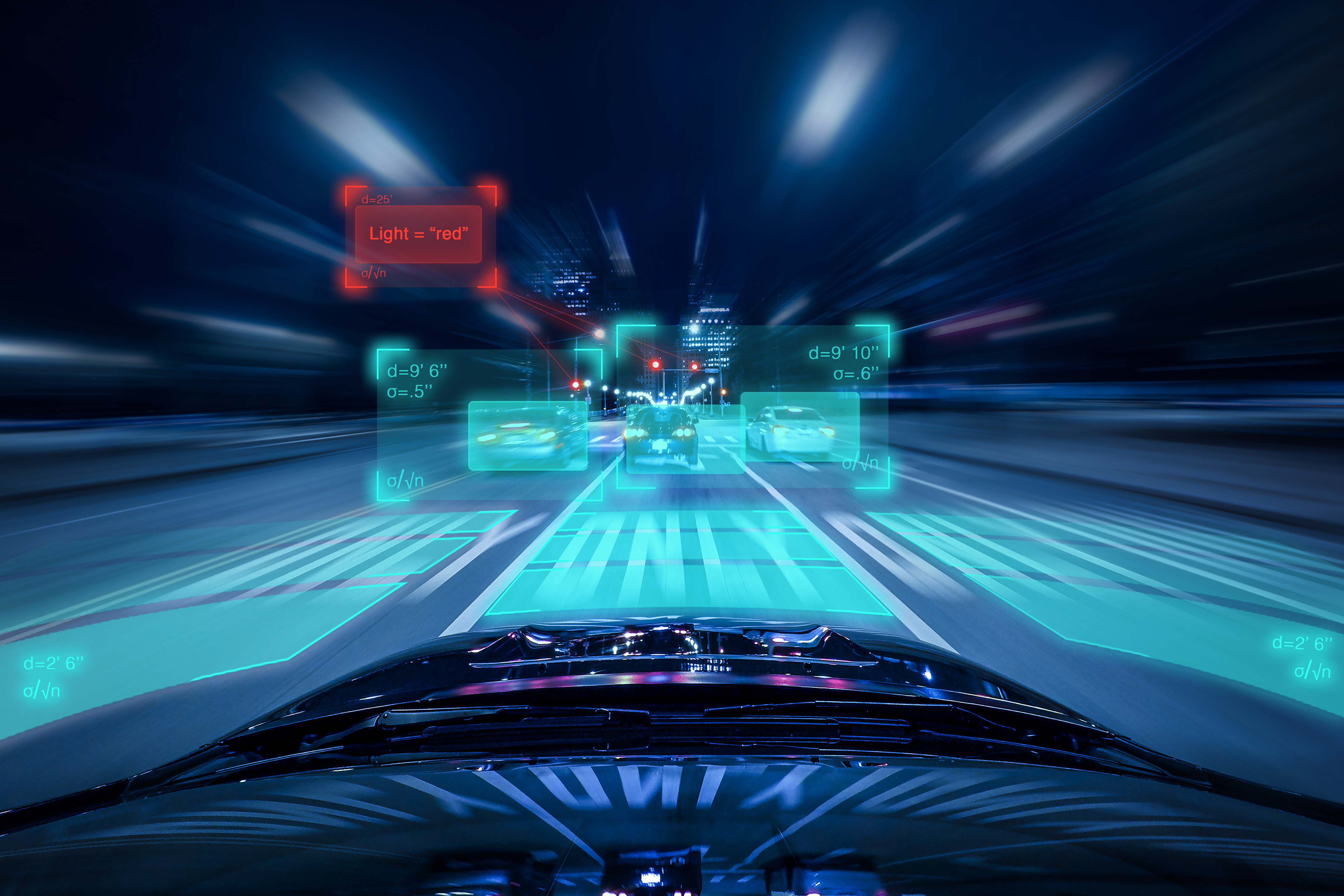Autonomous vehicles are coming to a roadway near you, and a multidisciplinary group at UConn is taking a hard look at how policymakers, the insurance industry, and the law, as well as cities and motorists, can maximize the benefits and minimize the unintended consequences of integrating driver-less vehicles into transportation systems.
The many societal hopes, fears, and questions that autonomous vehicles raise were the topic of a day-long conference on Monday presented by the Transportation Technology & Society (TTS) Research Group, sponsored by Travelers Insurance, and held in the Rome Ballroom on campus in Storrs.
“We started to look at the existing academic literature on autonomous vehicles and started to realize that most of the literature … was focused on the technology,” said Carol Atkinson-Palombo, an associate professor of geography who co-chairs the TTS Research Group with Norman Garrick, professor of civil engineering. “It was coming out of engineering units, and it was related to things like the sensors and all of those different kinds of things. We realized really quickly that there was very little that was going to be talking about the impacts on cities, the impacts on the existing transportation systems, and some of the broader societal issues.”
A diverse group of panelists from insurance, law, social sciences, industry, and policy groups agreed that technology is still quite far from developing the movie-like image of a driver-less car that delivers passengers to their destination while they work on a computer, or take a nap, or engage in other activity not at all related to operating the vehicle. How far off that technology – which is known as Level 4 or Level 5, meaning that the vehicle operates with limited or no human interaction – might be from becoming reality, none of the participants could say for sure.
But “light autonomous” or “semi-autonomous” vehicles – known as Level 2 or Level 3, which are only partially automated and still require a driver to be engaged in order to monitor the environment and take over the vehicle if and when necessary – are currently operating on some roadways in the United States and abroad.
Professor Neville Stanton, a psychologist, ergonomist, and engineer, who holds the chair in Human Factors Engineering in the Faculty of Engineering and the Environment at the University of Southampton in the UK, has studied human interaction with autonomous vehicle technology extensively. He said that automation isn’t yet powerful enough “to render the driver redundant,” instead requiring drivers to monitor continuously and intervene occasionally; and advised that autonomous vehicles shouldn’t be made widely available until at least Level 4 technology becomes a reality.
“We’ve been out on the roads with normal human beings, not professors in psychology, and they get into all sorts of stuff, even when we’re sitting in there with a video camera watching them with a safety driver next to them,” Stanton said. “We know the combined effect of all of these things is it reduces the driver’s readiness to intervene, especially if they’re getting on with another task. So, what do we say to our sponsors? We say, please don’t implement Levels 2 and 3. Get the vehicles ready for Level 4, where the drivers are rendered redundant … which may be a very limited user base. It may be they can only be used on freeways, motorways, and that’s it.”
Whether Level 2 or Level 4, implications for the insurance industry, for state, local and federal policymakers, and for the legal system abound. UConn Law Professor Sara Bronin said that self-driving cars are programmed to make assumptions about the world that they move through. If the car makes an assumption and guides her into a concrete barrier, she said, who ultimately bears the responsibility – the state, the municipality, or the vehicle itself?
“The cars assume a certain set of rules, when they look at the lines on the road, when they see movement on the sides…they model every other car, truck and motorcycle on the road,” said Bronin, who serves as the faculty director of the Center for Energy & Environmental Law and is part of the TTS team. “It’s pretty thrilling, it’s technologically miraculous, but it also presents some real challenges for all of us to consider now.”
Where does liability rest if an autonomous vehicle is involved in an accident? Will land use requirements change if autonomous ridesharing ultimately reduces individual car ownership and reduces the need for the parking lots and garages that now dominate many urban landscapes? How will industries manage the cybersecurity requirements that panelists agreed will be necessary? The TTS Research Group hopes to have started a wide-ranging discussion to begin addressing these and many of the other, broader societal questions surrounding autonomous vehicles as the technology continues to evolve.
For more information about the TTS Rearch Group, and the various grant-funded studies and projects it has underway, visit tts.uconn.edu.



